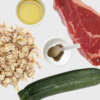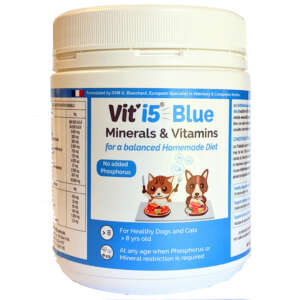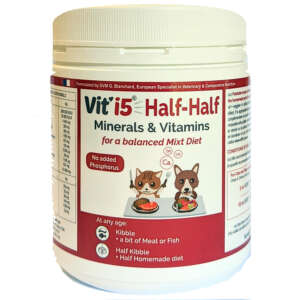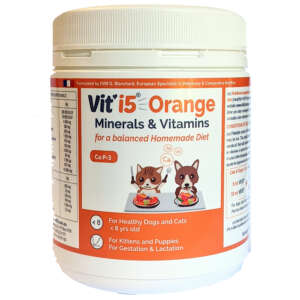Home prepared diet recipe example
For a kitten (4kg once grown up)


Recipe for a neutered kitten <10 months
If your kitten isn’t neutered, follow the recipe for a kitten. kitten food recipe
Once the adult size and age is reached, generally at 10 months old, change to a recipe for a neutered adult kitten food recipe

- Meat
KANGAROO lean human grade MEAT (boneless)
130 grams
5 ml
- Oil
CANOLA OIL or SOYBEAN OIL (Keep the bottle in the fridge)
5 ml
- Vegetables
ZUCCHINI
30 grams
- Carbohydrates
OAT FLAKES (weight dry, give cooked)
or SWEET POTATOES / POTATOES (skinless, ungerminated)
5 grams
20 grams
Adjust the amount of food delivered daily, but keep the same proportions of all ingredients listed here, in order to keep the diet balanced.
This recipe for a neutered kitten can be the same (all ingredients and proportions) during all growth, and offers in at least 4 meals per day, the amount consumed may very, a kitten normally regulates its appetite.
Homemade diet: easy preparation, storage and distribution
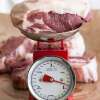
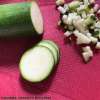
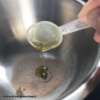
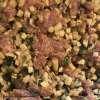
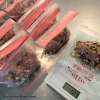
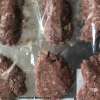
1- Weigh all ingredients raw, or as mentionned in the recipe
2- Chop and cook vegetables and meat/fish
If using canned vegetables, only strained and rinse.
If used fresh or frozen vegetables, cook them in salted boiling water, until mashable. Add the meat/fish filet for the last 5 minutes of cooking.
3- Prepare the mixture
First, mix the small ingredients, then add the cooked ones.
Mix the Vit’i5 powder + Canola or Soybean Oil + Salt/Wheat bran if any in the recipe.
Add cooked vegetables and meat/fish. Mix all ingredients until the mixture is homogenous.
4- Storage, preservation & feeding
If any in the recipe, cooked carbohydrates, such as oat flakes or rice or potato, must not be frozen/thamw : cook them on the day of distribution, and add to the freshly made or defrost mixture.
- Prepared and distributed the same day?
Cook the carbohydrates with the vegetables, This mixture can be used for the day.
The portion left for the other meals of the day can be stored in the fridge for 24 hours. - Prepared for later?
The mixture can be frozen in daily portions. It can be frozen for up to 4 weeks.
Each portion can be thaw in the fridge the day before the day of distribution.
The carbohydrate must be cooked on the day of distribution and mixed with the thawed portion of food.
This mixture can be used for the day. The portion left for the other meals of the day can be stored in the fridge for 24 hours.
5- Split the daily amount in at least 4 meals (no matter at what time)
Give the first meal freshly prepared, or a meal from the fridge.
Do not fry pan, microwave oven or oven heat: you can heat a meal by mixing with a bit of warm water.
The recipe for one day can be prepared as described, and distributed in 2 days instead of 1. The half for the next day shall be stored in the fridge.
In case you feed your kitten Half-Half, for instance kibble or canned petfood in the morning, and Homemade (this recipe) in the evening: use Vit’i5 Half-Half instead of the Vit’i5 Orange in the home prepared recipe, at the same amount.
If you have more specific questions, or in case of health issue, ask a certified nutritionist for special recipes.
Weight your kitten every week, the weight shall increase, but the body shape shall stay optimal, which means thin! Bones (shoulders, ribes, pelvic bones…) shall be easy to feel while patting your cat at any age.
Give half the amount of wet or dry petfood normally recommended to feed the cat for a day.
IMPORTANT NOTICE
This recipe is balanced and formulated by a veterinary nutrition specialist for a heathy pet. It is offered for personal use only.
Copyright 2024 @DrGeraldineBLANCHARD, European Specialist in Veterinary and Comparative Nutrition
Tailored recipes are also available on our website.
Warning
Avoid changing ingredients without a proper advice.
Changing an ingredient for another in a recipe may affect the overall composition and balance: for instance, for the same amount, providing a fatter meat/fish will bring more calories from fat (energy) and may increase body weight by increasing fat mass. Also, different vegetables may bring different amount of calories (energy).
Nutritional information
WHY SUCH INGREDIENTS?
The kitten food recipe contains
Animal Proteins
Meat, muscle, and fish filet are a source of animal protein, and provide protein and all amino acids necessary in the diet of dogs and cats.
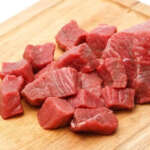 You can cook meat of fish in order to reach 70°C for a few minutes, as food safety requires to avoid contamination problems (such as bacteria, parasites…). kitten food recipe
You can cook meat of fish in order to reach 70°C for a few minutes, as food safety requires to avoid contamination problems (such as bacteria, parasites…). kitten food recipe
The meat and fish differ by their proportion of protein and fat, and energy. So they are not all the same.
Also, some pets find some tastes more interesting/palatable/attractive than others.
Do not replace without considering the composition or asking to your vet or assess the body weight of your pet weekly.
Mineral vitamin supplement
Vit’i5 is a mineral and vitamin supplement formulated by a veterinary nutrition specialist in order to balance homemade diet. It provides the micronutrients that are lacking of in the routine dietary components such has meat+oil+vegetables+carbs.
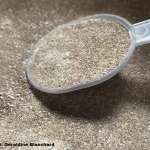 Vit’i5 has to be added to a diet each time it contains fish or meat. It has been designed in 3 products. It may be adapted depending on age and condition, and with the amount of meat/fish each day. Vit’i5 is neither seasonal nor optional.
Vit’i5 has to be added to a diet each time it contains fish or meat. It has been designed in 3 products. It may be adapted depending on age and condition, and with the amount of meat/fish each day. Vit’i5 is neither seasonal nor optional.
If the diet is half homemade and half commercial, give Vit’i5 Half-half instead of any Vit’i5 recommended in the homemade recipe.Adjust to the amount of meat or fish filet to keep the same proportions Vit’i5/meat.
Warning:
Do not heat or cook Vit’i5, in order to preserve vitamins
Do not give Vit’i5 if your dog of cat eats only a complete pet food either dry or wet.
Complex carbohydrates (source of energy from Starch)
Starch is the complex carbohydrate contained is pasta, rice, corn, wheat, potatoes, tapioca, chick pees, lentils, bread, biscuits…
It must be cooked (water boiled) to be digestible and become a source of energy. Pets have individual and variable capacity to digest starch, linked to their genetic and epigenetic production potential of alpha-amylase.
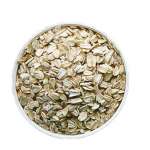
Make sure to boil carbohydrates, such as rice or peeled potatoes, TWICE the time it should be for people. That maximises the digestibility of the starch by pets.
Once cooked, DO NOT freeze carbohydrates as freezing-defrosting process decreases the digestibility of starch, and could induce digestive issue such as diarrhea and bloating.
In the recipe, a part of Carbs can also be replaced by other carbs or by treats, to provide an equivalent amount of calories.
Equivalent to 10 grams of raw (dry) OAT FLAKES:
– 10 grams of PASTA or white RICE, cooked
– 40 grams of POTATO or SWEET POTATO, cooked
– 10 grams of any BISCUIT designed for cats
– 5ml (1 spoon) of peanut butter
– 10 grams of Cheese, such as cheddar CHEESE
– 40 grams of Cottage cheese (4%Fat)
– 50 grams of Pure Plain 4%Fat Natural YOGURT (such as Greek or Plain organic yogurt without additional flavours or ingredients)
Essential fatty acids
 Canola oil, or soybean oil, is a source of essential fatty acids, omega 6 (linoleic acid) and omega 3 (linolenic acid).kitten food recipe
Canola oil, or soybean oil, is a source of essential fatty acids, omega 6 (linoleic acid) and omega 3 (linolenic acid).kitten food recipe
They may be altered by heat and sunlight.
Don’t heat or cook it, to preserve the fatty acids. Store the bottle in the fridge.
Caps of fish oil may be added to bring also long chain omega 3 fatty acids EPA & DHA, but this does not replace the canola or soybean oil. The fatty acids are different.
Fiber source
Vegetables are a beneficial source of fiber.
Give all vegetables cooked, either boiled, or steamed enough to become smooth form, or strained if canned.
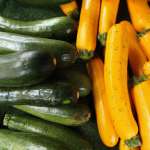 Zucchini is a special vegetable that can be given cooked, but can also be cut and frozen raw, and, once defrost, included in the diet without cooking.
Zucchini is a special vegetable that can be given cooked, but can also be cut and frozen raw, and, once defrost, included in the diet without cooking.
Carrots may be replaced by broccoli, green beans, skinless pumpkin or butternut with the same weight basis. These vegetables must be cooked enough to be easily cut or mashed.
Last, to offer a bigger amount of vegetables, 100 grams of carrots or equivalent may be replaced by 150 grams of zucchini, tomato, mushroom, asparagus, endives, all cooked well enough to be easily cut or mashed.
Wheat bran can also be used are a source of fiber, along with or instead of vegetable (not in the same amount as wheat bran is dry!). A 2.5ml-spoon in the daily recipe for kitten instead or with vegetables.
Treat
FRUITS are usually more appreciated by dogs than cats.
Fruits may represent a treat or a part of the vegetables. Dogs can eat them raw.
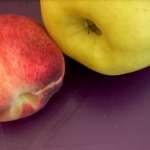
Better offer juicy FRUITS such as apple, peach, watermelon, strawberry, pear…
If doing so, stick to the following equivalence: 50 grams of FRESH FRUIT may subsitute 50 to 100 grams of CARROT.
(Do not offer banana or dry fruit as a TREAT, they are very rich in energy and can replace carbohydrates)
Please DO NOT REPLACE more than half of the vegetables with fruits as part of fiber source.
For example, in a recipe with 200grams of vegetables, that should not be more that 100 grams (half of 200 grams) of vegetables to be replaced by fruits. Thus so 100/2 = 50 grams of FRUIT such as fresh APPLE in this recipe.
Avoid large amounts of vitamin C-rich fruits such as kiwi fruit, orange… as large amounts of vitamin C would be metabolized in oxalic acid, excreted in urine.
DAIRY such as cheese or yogurt are also commonly shared with the pet. No problem with plain yogurt with only milk and ferments in the list of ingredients (avoid the ones with any other component added), and with plain cheese, but be very careful at the amount given, it brings a lot of calories, and 10 grams of cheese must be considered as bringing as much energy as 4 ml of oil or 15 g of raw rice!
BISCUITS also are often proposed. They also brings energy, so limit the amount, and substitute the similar amount (in grams) of raw rice rather than add biscuit to a recipe.
All the recipes for pets
Check our recipes main page to browse all of our home made recipes for cats and dogs of all sizes and ages!

